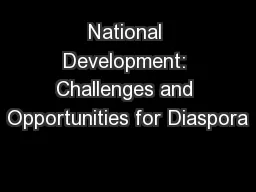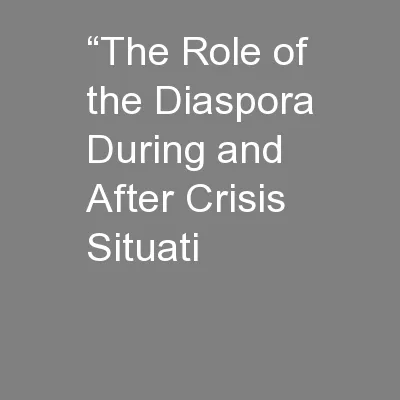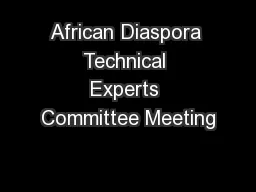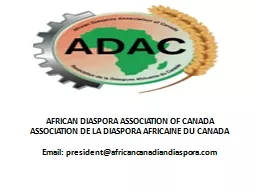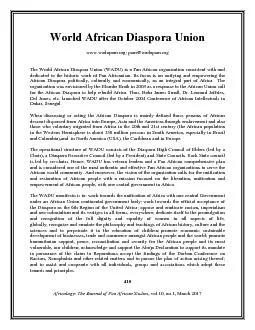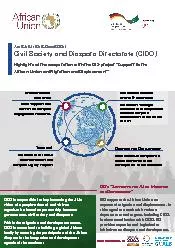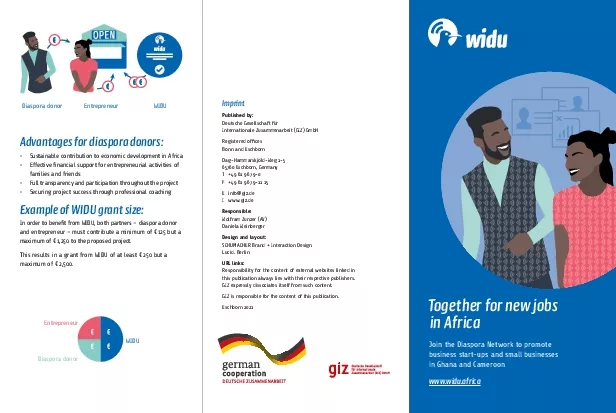PPT-National Development: Challenges and Opportunities for Diaspora
Author : trish-goza | Published Date : 2018-03-10
Ambika P Adhikari Dr Des AICP LEED AP International Development Consultant CH2M HILL Phoenix AZ USA Sr Sustainability Scientist and Faculty Associate Arizona State
Presentation Embed Code
Download Presentation
Download Presentation The PPT/PDF document "National Development: Challenges and Opp..." is the property of its rightful owner. Permission is granted to download and print the materials on this website for personal, non-commercial use only, and to display it on your personal computer provided you do not modify the materials and that you retain all copyright notices contained in the materials. By downloading content from our website, you accept the terms of this agreement.
National Development: Challenges and Opportunities for Diaspora: Transcript
Ambika P Adhikari Dr Des AICP LEED AP International Development Consultant CH2M HILL Phoenix AZ USA Sr Sustainability Scientist and Faculty Associate Arizona State University Tempe AZ USA. Defining ‘African diaspora’. The African Union defines its diaspora as “consisting of people of African origin living outside the continent, irrespective of their citizenship and nationality and who are willing to contribute to the development of the continent and the building of the African Union.”. . VLIR-UOS . Séminaire. . Maroc. South . policy Morocco . C. ity of . Antwerp. . Specific. . Antwerp. context. + 160 . nationalities. or . origins. Institutions. . Side Event to the ECOSOC . Humanitarian Affairs Segment. June 25. th. 2014, 8:15 to 9:30am, . Conference room 7 (NLB), UN Headquarters, New York. Speaker: Katleen Felix, President. . H. aitian Hometown Associations Resource Group (HHTARG). in Human Disease Genetics & Genomics. Manolis Kellis. MIT Computer Science & Artificial Intelligence Laboratory. Broad Institute of MIT and Harvard. Big data Opportunities & Challenges . in human disease genetics & genomics. March 2013. GAME ANALYSIS:. Top 25 Zones of Future Innovation. © 2013 Institute for the Future for Rockefeller Foundation. All rights reserved.. S. R-1563B. 16 | Global Diaspora Service. 2. The . connections between members of a diaspora and their homeland are often strong, . Robtel. . Pailey. SOAS. Mo Ibrahim Governance and Development. Africa Residential Course. May 2013. Accra, Ghana. Diaspora and Governance. Diaspora. Dispersal (traumatically?) of . a population from an original . Introduction. Theoretical aspects of the study of diaspora and migration. Case studies. Concluding thoughts. Migration . is the movement of people across the globe. . Diaspora:. Originally . the term used for the . South Africa, February 21-22, 2011. Richard Cambridge,. Adviser to Regional Vice President & Manager, African Diaspora Program. Africa Region, World Bank. Knowledge Transfer and . Skills Mobilization . Instructor: J. Fernandez. “The darkest thing about Africa has always been our ignorance of it.”. . -George Kimble. . Course Overview. African Diaspora examines the movement of all . humans . from Africa to places around the . . SYFTET. Göteborgs universitet ska skapa en modern, lättanvänd och . effektiv webbmiljö med fokus på användarnas förväntningar.. 1. ETT UNIVERSITET – EN GEMENSAM WEBB. Innehåll som är intressant för de prioriterade målgrupperna samlas på ett ställe till exempel:. ASSOCIATION DE LA DIASPORA AFRICAINE DU CANADA . Email: president@africancanadiandiaspora.com . AFRICAN DIASPORA ASSOCIATION OF CANADA. ASSOCIATION DE LA DIASPORA AFRICAINE DU CANADA. 2 juin 2008. Africology: The Journal of Pan African Studies, vol.10, no.1, March vision of a people - oriented and - driven organization based on partnership between governments , civil society and diaspora s . Within the migration and development nexus, CIDO is committed to 149Sustainable contribution to economic development in Africa149Effective 31nancial support for entrepreneurial activities of families and friends149Full transparency and participation throughout the
Download Document
Here is the link to download the presentation.
"National Development: Challenges and Opportunities for Diaspora"The content belongs to its owner. You may download and print it for personal use, without modification, and keep all copyright notices. By downloading, you agree to these terms.
Related Documents

